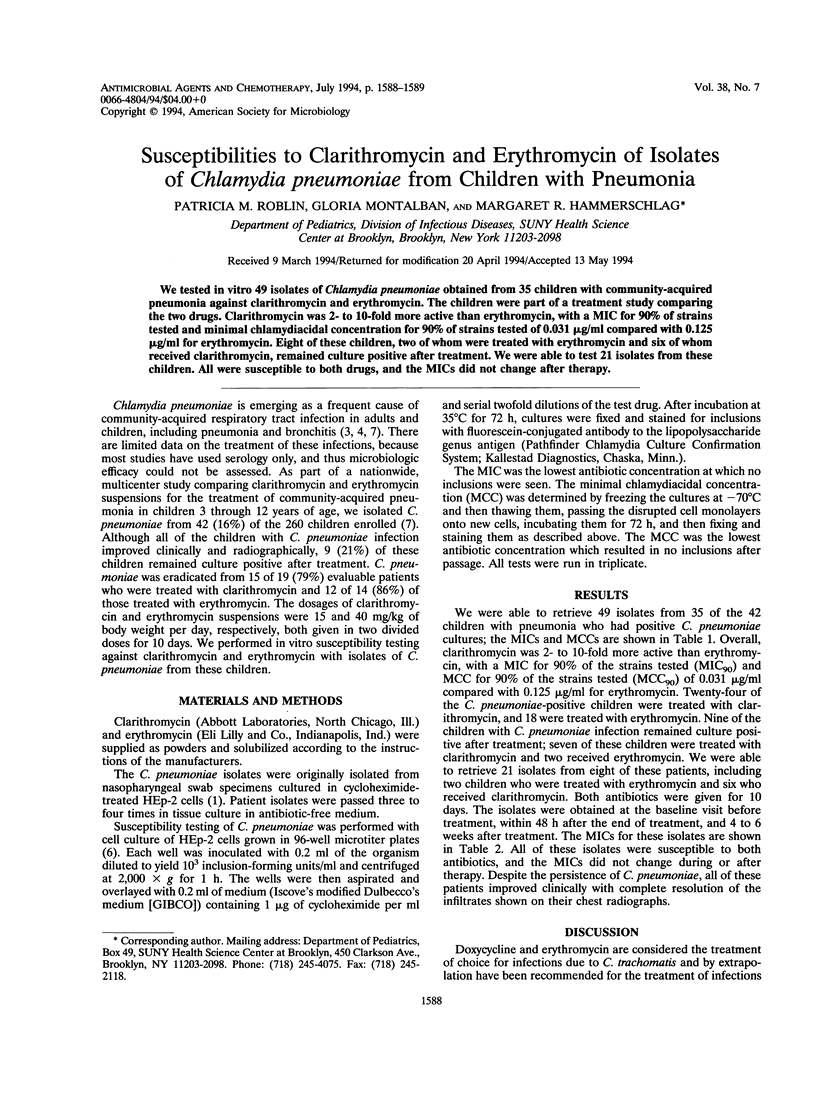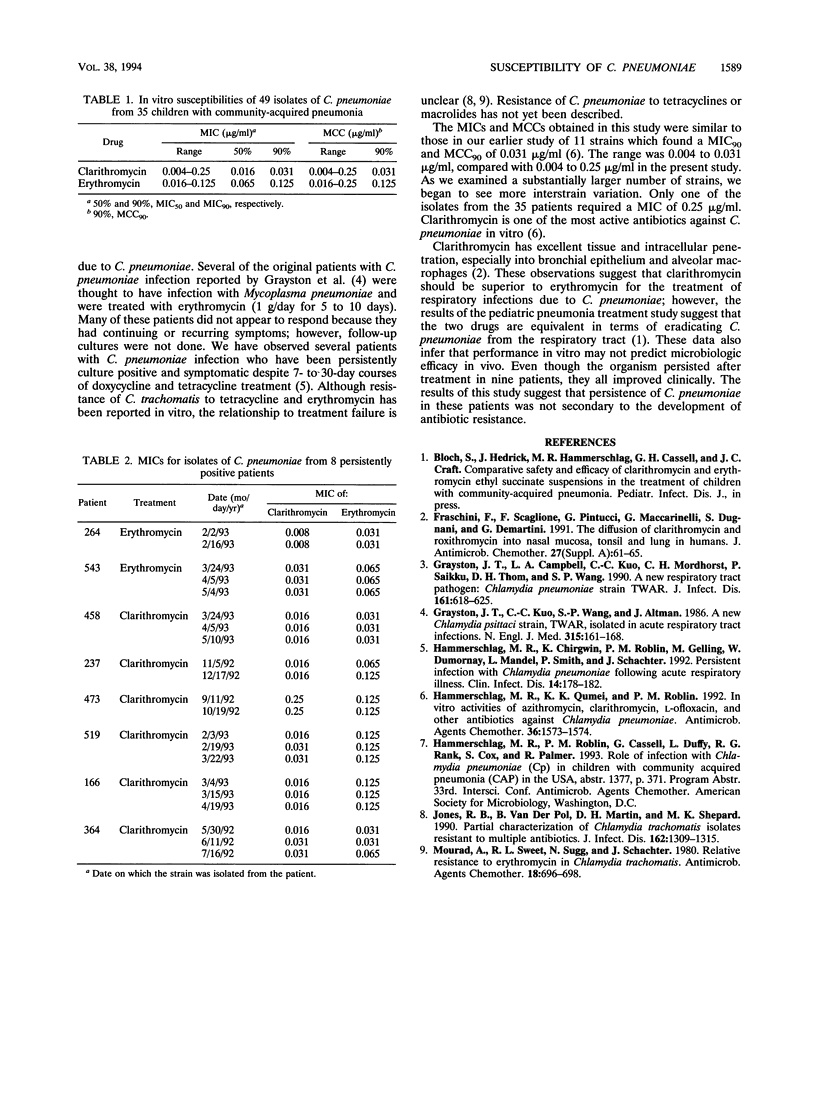Abstract
We tested in vitro 49 isolates of Chlamydia pneumoniae obtained from 35 children with community-acquired pneumonia against clarithromycin and erythromycin. The children were part of a treatment study comparing the two drugs. Clarithromycin was 2- to 10-fold more active than erythromycin, with a MIC for 90% of strains tested and minimal chlamydiacidal concentration for 90% of strains tested of 0.031 microgram/ml compared with 0.125 microgram/ml for erythromycin. Eight of these children, two of whom were treated with erythromycin and six of whom received clarithromycin, remained culture positive after treatment. We were able to test 21 isolates from these children. All were susceptible to both drugs, and the MICs did not change after therapy.
Full text
PDF

Selected References
These references are in PubMed. This may not be the complete list of references from this article.
- Fraschini F., Scaglione F., Pintucci G., Maccarinelli G., Dugnani S., Demartini G. The diffusion of clarithromycin and roxithromycin into nasal mucosa, tonsil and lung in humans. J Antimicrob Chemother. 1991 Feb;27 (Suppl A):61–65. doi: 10.1093/jac/27.suppl_a.61. [DOI] [PubMed] [Google Scholar]
- Grayston J. T., Campbell L. A., Kuo C. C., Mordhorst C. H., Saikku P., Thom D. H., Wang S. P. A new respiratory tract pathogen: Chlamydia pneumoniae strain TWAR. J Infect Dis. 1990 Apr;161(4):618–625. doi: 10.1093/infdis/161.4.618. [DOI] [PubMed] [Google Scholar]
- Grayston J. T., Kuo C. C., Wang S. P., Altman J. A new Chlamydia psittaci strain, TWAR, isolated in acute respiratory tract infections. N Engl J Med. 1986 Jul 17;315(3):161–168. doi: 10.1056/NEJM198607173150305. [DOI] [PubMed] [Google Scholar]
- Hammerschlag M. R., Chirgwin K., Roblin P. M., Gelling M., Dumornay W., Mandel L., Smith P., Schachter J. Persistent infection with Chlamydia pneumoniae following acute respiratory illness. Clin Infect Dis. 1992 Jan;14(1):178–182. doi: 10.1093/clinids/14.1.178. [DOI] [PubMed] [Google Scholar]
- Hammerschlag M. R., Qumei K. K., Roblin P. M. In vitro activities of azithromycin, clarithromycin, L-ofloxacin, and other antibiotics against Chlamydia pneumoniae. Antimicrob Agents Chemother. 1992 Jul;36(7):1573–1574. doi: 10.1128/aac.36.7.1573. [DOI] [PMC free article] [PubMed] [Google Scholar]
- Jones R. B., Van der Pol B., Martin D. H., Shepard M. K. Partial characterization of Chlamydia trachomatis isolates resistant to multiple antibiotics. J Infect Dis. 1990 Dec;162(6):1309–1315. doi: 10.1093/infdis/162.6.1309. [DOI] [PubMed] [Google Scholar]
- Mourad A., Sweet R. L., Sugg N., Schachter J. Relative resistance to erythromycin in Chlamydia trachomatis. Antimicrob Agents Chemother. 1980 Nov;18(5):696–698. doi: 10.1128/aac.18.5.696. [DOI] [PMC free article] [PubMed] [Google Scholar]


